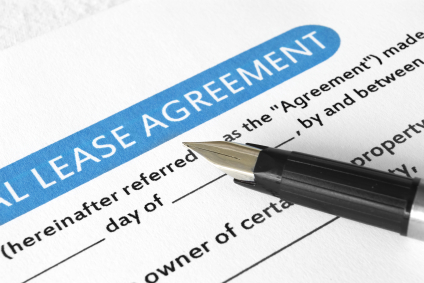
05 Oct COMMERCIAL LEASING
A Legal Perspective for Brokers (Part I)
Economic necessity produces change and the commercial real estate rental market is no exception. Now, more than ever, the economic climate is forcing landlords and tenants to look for ways to reduce costs, causing them to scrutinize the bottom line when entering into a new lease agreement or restructuring an existing one. Reviewing some vital elements of a lease transaction and the elements to which commercial brokers should pay special attention can add value for their clients. This is the first of a series of articles that explore many of these important issues that arise during a commercial lease negotiation.
Landlord’s Due Diligence: The current market forces the landlord to closely scrutinize a prospective tenant. The prospective tenant’s financial condition and industry standing are of supreme importance. The landlord must ensure that the prospective tenant is on sound financial footing and can meet its leasehold obligations throughout the term of the lease. The landlord should require the prospective tenant to produce:
· Tax returns for the past two years;
· Audited financial statements for the past two years;
· Current balance sheet;
· Profit/Loss statement;
· Good standing certificate;
· Rental history and references; and
· A representation from the tenant that it has not defaulted in payment, or otherwise, under the terms of a lease in the past ten years.
This information can be vital in uncovering facts that will prevent the landlord from leasing space to a problem tenant. A tenant with solid financials and a strong business is as good as gold – especially today. The broker can provide value to the landlord in this area by:
(1) Performing an initial screening of prospective tenants;
(2) Facilitating the delivery of documents requested by the landlord;
(3) Performing its own independent analysis of the prospective tenant’s financial stability;
(4) Keeping the lines of communication open between the parties; and
(5) Advising the landlord with respect to current market conditions and how the prospective tenant compares to other prospective tenants that may be interested in the space.
This higher level of scrutiny competes with the landlord’s need to fill vacant space. One of the landlord’s biggest challenges in today’s market is to minimize vacancy. This may require the landlord to make concessions that it might not otherwise make in better financial times, such as free or reduced rent, tenant improvement allowances, space re-measurement, or space upgrade. The broker can add value by helping the landlord understand the type of concessions that are becoming more relevant in the market and by negotiating with the prospective tenant to limit the scope of concessions requested. (A broker acting on behalf of the prospective tenant will focus his or her efforts on maximizing the concessions to be obtained from a landlord operating with high vacancy).
Tenant’s Due Diligence: On the other side of the equation is the tenant’s need to make sure the landlord is on sound financial footing. Accordingly, the tenant should ask the landlord for:
•Current financial statements;
•Mortgage status and payment history;
•Performance history of the building including: historical occupancy rate, tenant turnover rate, landlord/tenant dispute history;
•System performance & maintenance history, including: HVAC, heating, lighting and technology platform;
•Certificates of Occupancy and/or Completion;
•Representation of no violations and/or open permits; and
•Lien search.
The prospective tenant also is well advised to perform a lien search on the building and the landlord to find out whether any mortgages, judgments or other liens exist. This is a “red flag” opportunity for the tenant – the relatively small amount of time and money spent for a lien search could save the tenant substantial trouble in the long run. The tenant must do more than just kick the tires – it must perform a thorough analysis to ensure that the landlord is not in any financial danger. A common-sense rule is that a landlord’s financial problems will almost certainly translate into lease problems, and that will adversely affect the tenant’s use of the leased premises. A broker can add value by helping the prospective tenant perform its due diligence and by providing useful information that the tenant can use in its decision-making.
Know What Space You Need: First, the prospective tenant must carefully select the space to be leased. Of course, the tenant must consider location, but of extreme importance is the need to accurately determine the size of the space it needs to lease. Not only must it accurately determine what space it currently needs, the tenant must project how much more (or less) space it will need over the term of the lease. The days when a tenant would routinely lease “shadow space” (empty space that is leased in addition to the tenant’s current need for potential and unspecified future expansion) and leave it empty for future use are largely over. Instead of leasing shadow space for the entire term of the lease, the tenant may want to determine the potential for expansion into additional space in the building as the need arises. However, if a tenant does decide to lease shadow space, it should make sure that the lease allows for subleasing so that, if necessary, it can fill the shadow space with a subtenant to help cover costs. A broker can add value here by knowing the building and landlord with respect to whether there is potential for the tenant to expand into additional space as needed, knowing the potential in the market for subleasing opportunities and helping the tenant negotiate for the most appropriate space.
Know What You Are Paying For: Once the tenant has selected the appropriate space, it must make sure the space is accurately measured and reflected in the lease. Now the fun begins, the lease will speak of square footage in one or more of the following terms: rentable square feet, usable square feet and actual or “carpetable” square feet. Rentable and usable square foot measurements will be different than the actual or “carpetable” square footage of the leased space. A prospective tenant needs a savvy broker to help it navigate this area because this can be an opportunity for substantial savings or for a costly mistake.
Rentable square footage is typically used to calculate the rental amount. Rentable square footage includes the gross space actually being leased, plus the prospective tenant’s share of building common areas, such as lobbies, hallways and cafeterias. A “loss factor” is then subtracted (usually 8% to 20%) and you are left with the actual space the tenant inhabits. The smaller the loss factor, the less money the prospective tenant will spend on space that it does not actually use.
Usable square footage is a smaller measurement than rentable square footage because it does not include common areas. However, it is still not the true measurement of the space occupied because usable square footage is measured from the middle of demising walls that separate the leased space from the rest of the building to the middle of the building’s exterior “glassline”. It also includes interior unusable space, such as interior walls and columns.
“Carpetable” Space reflects the actual space you can use (or carpet) in the leased premises. After accounting for interior walls and columns, you may find that the actual square footage is 5% to 10% less than usable square footage. Knowing and understanding these calculations can help the broker advise and guide the tenant in lease negotiations. The tenant needs to minimize the unusable square footage it must pay for under the lease and the broker can be an invaluable asset by effectively guiding the tenant in this regard.
In conjunction with understanding how much space a tenant will need, the tenant (with the broker’s help) should evaluate the use pattern of its particular business. In other words, how will the tenant’s business use the space in the most efficient way possible. This provides another opportunity for the tenant to minimize its expenses – if a tenant can use the space efficiently by locating offices, conference rooms, copy rooms, cubicles and hallways without waste, then it can save money. Different buildings have different configurations.
Some businesses will be able to work within a given configuration, some will not. For example, is the tenant a law firm that requires many individual offices and secretary stations so that it can minimize the impact of interior columns and walls or is it a financial services firm that requires a large, open space for trading desks? Office space design is critical in this area and a design that minimizes the impact of interior obstructions can potentially provide more “carpetable” space to the tenant and save money over the term of the lease. A good broker can match a prospective tenant with a building that meets its needs, which will, in turn, save the tenant money.
There are many ways that a broker can facilitate the leasing process and ensure the maximum value for their clients. Please stay tuned for further articles explaining the commercial leasing process.






